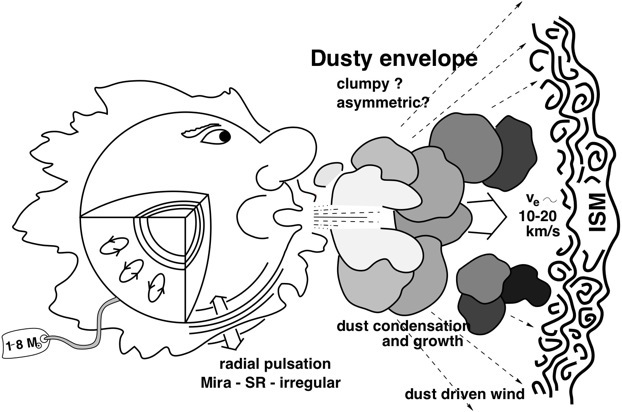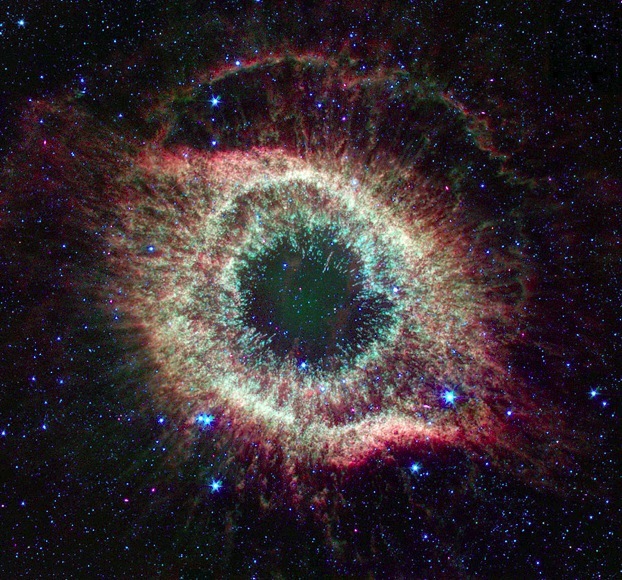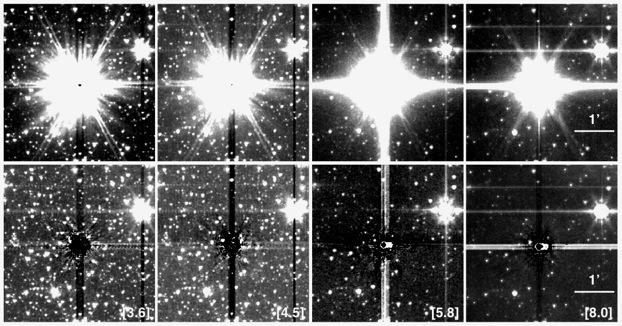Mass Loss and Variability in AGB Stars

The Sun, towards the end of its life, will become an Asymptotic Giant Branch (AGB) star. Once exhausted its primary Hydrogen nuclear fuel, it will ultimately become 10,000 times more luminous than it is today, and swell beyond the orbit of our planet. When that will happen, Earth will be engulfed and vaporized. This act of destruction, however, will also be an act of creation: it is in the nuclear furnaces of AGB stars that most of the carbon, the basic element of life, available in the Galaxy is synthesized. This carbon, together with other heavy elements, is slowly released to the circumstellar environment in the form of a dusty wind, that gradually surrounds the star with a thick opaque cocoon. Like a butterfly from the chrysalis, the cocoon will ultimately burst to give rise to a Planetary Nebula, one of the most beautiful and ephemeral objects in the sky, leaving behind a white dwarf. The carbon and the other elements released in the AGB wind will merge with the interstellar medium, ready for a new cycle of stellar and planetary formation: the carbon atoms in our body have likely been produced in AGB stars billion of years ago.

The Helix Planetary Nebula, observed with Spitzer/IRAC (Hora, Latter, Smith & Marengo, 2006)
Because of their central role in the chemical evolution of the Galaxy, AGB stars have been subjected to intense studies. Due to the dust in their circumstellar cocoon, they are difficult to observe in the visible. However, the same dust is the source of strong thermal radiation that makes them bright infrared sources [4]. The InfraRed Array Camera (IRAC) onboard the Spitzer Space Telescope is the ideal instrument to study AGB stars in this Galaxy and beyond, but a characterization in the IRAC photometric system of this class of stars was missing. In order to fill this gap, we have observed ~50 nearby AGB stars with IRAC, as part of Spitzer Guaranteed Time [1]. Due to their extreme brightness, sufficient to saturate the IRAC detectors even at the shortest exposure times, we have used special PSF fitting techniques allowing us to measure their photometric flux despite saturation.

Spitzer/IRAC image of the AGB star CZ Ser (top). The bottom row shows the same images after PSF fitting, necessary to derive the star photometry despite high level of saturation (from Reiter, Marengo & Fazio, 2007).
As expected, we found that the IRAC photometry of AGB stars was strongly influenced by the presence of circumstellar dust and molecular features, making possible, in some cases, to determine the chemistry of the stellar photosphere from its IRAC colors.
Similar to the case of Cepheids, AGB stars pulsate radially, which makes them variables of the “Mira” or “semiregular” class (Miras are characterized by stronger and more regular pulsations than semiregulars). These pulsations are the engines triggering the production of dust in the AGB circumstellar space, and ultimately are responsible for the AGB mass loss. To investigate this relation, we have studied the correlation between the infrared colors of AGB stars and their period [1]. We found that semiregular variables tend to have a precise relation between their infrared excess and the period, while in Miras this relation is broken by the presence of larger amounts of hot dust. The lack of this hot dust around semiregulars may be an indication that these stars cannot sustain a continuous dust production like the Miras, as first proposed in Marengo, Ivezic and Knapp, 2001 [3].

For more information:
[1] Spitzer/IRAC Characterization of Galactic AGB Stars, Marengo, M. et al. 2006 in proceedings of the conference "Why Galaxies Care About AGB Stars", held in Vienna, August 7-11, 2006, arXiv:astro-ph/0611346
[2] Mid-Infrared Observations of the Mira Circumstellar Environment, Marengo, M. et al. 2001, ApJ Letters 556, L47
[3] 100-year Mass Loss Modulation on the Asymptotic Giant Branch, Marengo, M., Ivezic, Z., Knapp G.R. 2001, Monthly Notices of the Royal Astronomical Society 324, 1117
[4] Mid-IR Colors as a Diagnostic Tool of Circumstellar Envelopes in AGB Stars, Marengo, M., Busso, M., Silvestro, G., Persi, P., Lagage, P.O. 1999, A&A 348, 501
